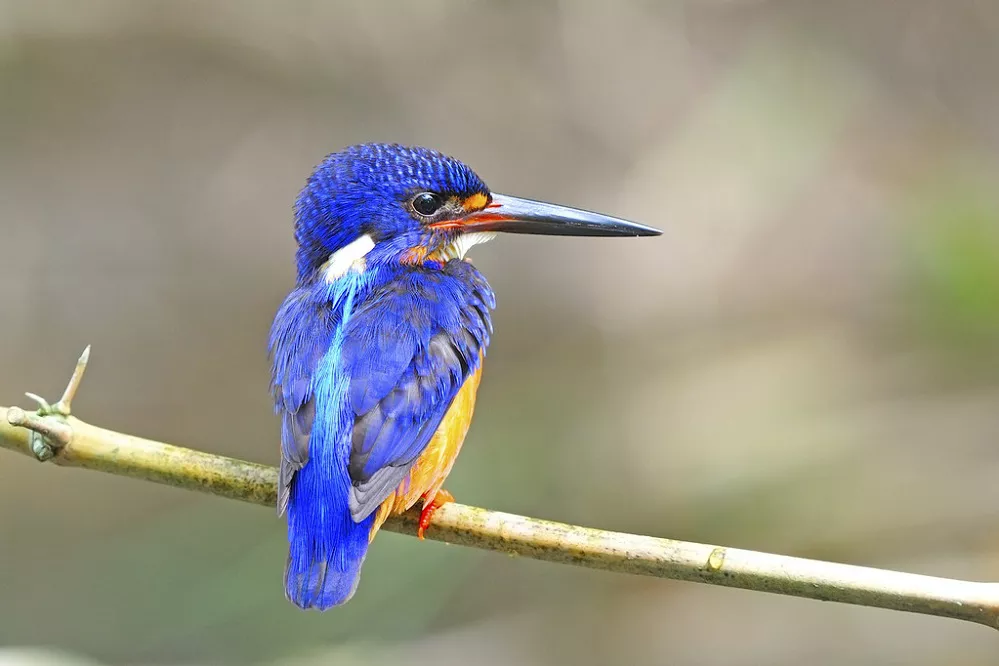Among the diverse and enchanting species of kingfishers, the Blue-eared Kingfisher (Alcedo meninting) stands out with its vibrant colors and striking appearance. This small avian gem is renowned for its brilliant blue plumage and can be found in specific regions across Southeast Asia. In this article, we will explore the habitat preferences and geographic range of the Blue-eared Kingfisher, shedding light on its natural environment and the conservation efforts required to protect its delicate ecosystems.
Habitat Preferences:
The Blue-eared Kingfisher is predominantly associated with riparian habitats, characterized by freshwater bodies such as rivers, streams, lakes, and ponds. This species exhibits a particular affinity for forested areas near water sources, as they provide essential features for nesting, roosting, and hunting. Here are the key habitat characteristics that attract the Blue-eared Kingfisher:
Forested Waterways: Blue-eared Kingfishers are often observed in areas where rivers and streams flow through dense forests. The presence of tall trees, foliage, and overhanging branches provides ideal perches from which the kingfisher can survey its surroundings and dive for prey.
Clear and Calm Waters: The kingfisher favors freshwater bodies with clear and calm waters, as these conditions facilitate its hunting activities. Such habitats typically harbor an abundance of small fish, insects, crustaceans, and amphibians, which constitute the primary diet of the Blue-eared Kingfisher.
Vegetation and Bankside Vegetation: The availability of vegetation along the water’s edge, including reeds, grasses, and shrubs, is crucial for the Blue-eared Kingfisher’s nesting and roosting requirements. These areas provide suitable locations for constructing nests, sheltering from adverse weather conditions, and protecting their young.
Geographic Range:
The Blue-eared Kingfisher is native to Southeast Asia and has a relatively restricted range within the region. Its distribution spans several countries, including Indonesia, Malaysia, Brunei, Singapore, and parts of Thailand, Myanmar, Cambodia, and Vietnam. The species is also found in the Philippines, specifically on the islands of Luzon, Negros, Cebu, and Mindanao.
Conservation Status and Threats:
The Blue-eared Kingfisher is currently classified as a species of least concern on the International Union for Conservation of Nature (IUCN) Red List. However, several threats loom over its survival and the health of its habitats. The main challenges faced by the Blue-eared Kingfisher include:
Habitat Loss: Rapid deforestation, urbanization, and the conversion of forested areas into agricultural land pose significant threats to the Blue-eared Kingfisher’s riparian habitats. Destruction of these ecosystems disrupts the delicate balance of the species’ preferred habitats.
Water Pollution: Industrial activities, agricultural runoff, and improper waste management contribute to the pollution of water bodies. The accumulation of pollutants affects the availability of suitable prey, diminishing the kingfisher’s food sources and potentially harming their health.
Climate Change: Altered weather patterns, increased frequency of extreme events, and rising temperatures can disrupt the delicate ecological balance of riparian habitats. Changes in rainfall patterns and water availability may impact the populations of fish and other prey species, indirectly affecting the Blue-eared Kingfisher.
Conservation Efforts:
To safeguard the Blue-eared Kingfisher and its habitats, conservation initiatives must focus on the following strategies:
Protected Areas: Identifying and designating key riparian habitats as protected areas or nature reserves can provide a safe haven for the Blue-eared Kingfisher and other associated species. These areas should be managed to ensure the preservation of their natural features and the promotion of sustainable practices.
Habitat Restoration: Restoration efforts should focus on reestablishing degraded riparian habitats, including reforestation, the preservation of critical vegetation, and the restoration of water quality. This can help recreate suitable conditions for the Blue-eared Kingfisher to thrive.
Awareness and Education: Raising public awareness about the ecological importance of riparian environments and the conservation needs of the Blue-eared Kingfisher is crucial. Education programs, community involvement, and ecotourism initiatives can contribute to a greater understanding and appreciation of this remarkable species.
Conclusion:
The Blue-eared Kingfisher’s association with riparian habitats highlights the intricate connection between its vibrant existence and the health of these unique ecosystems. By prioritizing the protection of riparian environments, we can ensure the long-term survival of this dazzling bird and maintain the delicate balance of Southeast Asia’s natural heritage.
Related topics:
- What is Blue-eared kingfisher?
- Blue-eared Kingfisher vs Common Kingfisher: What’s the difference?
- What do Kingfishers eat?


 Facebook
Facebook  Instagram
Instagram  Youtube
Youtube 